The Mercedes-Benz E 300 BlueTec Hybrid can achieve an astounding real-world range of up to 2129 km on a single tank. This impressive feat is possible thanks to its advanced hybrid technology and efficient diesel engine, offering exceptional fuel economy for long-distance driving.
Ever look at your car’s fuel gauge and wonder if you’ll make it to your destination without stopping for gas? For many drivers, especially those embarking on long road trips, range anxiety is a real concern. But what if I told you that some cars can go incredibly far on just one tank? The Mercedes-Benz E 300 BlueTec Hybrid is one such marvel. It’s designed to blend powerful performance with outstanding efficiency, meaning fewer stops and more miles of comfortable cruising. If you’ve heard whispers of its legendary range and are curious how it’s achieved, you’re in the right place! We’ll break down the technology and what makes this car a true long-distance champion, so you can feel confident about your next journey.
What Makes the E 300 BlueTec Hybrid’s Range So Remarkable?
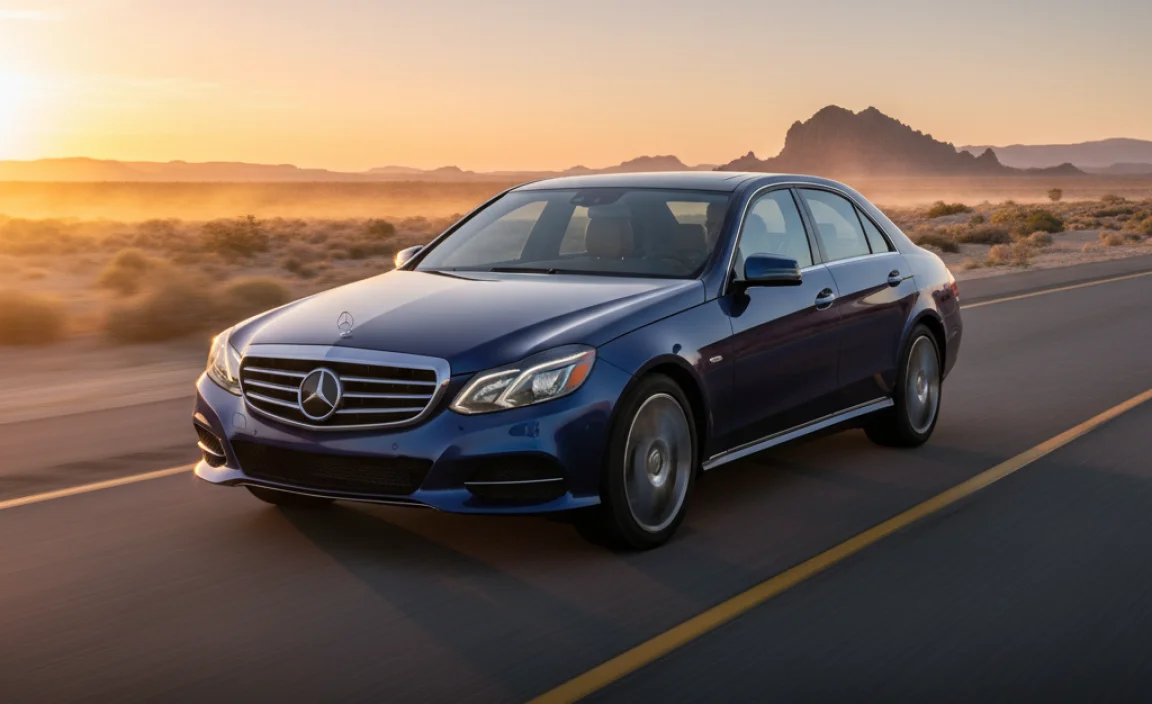
The secret to the E 300 BlueTec Hybrid’s exceptional driving range lies in its intelligent powertrain. It’s not just about having a big fuel tank; it’s about making every drop of fuel count. This sophisticated system seamlessly combines a powerful yet efficient diesel engine with an electric motor, working together to optimize fuel consumption in various driving conditions.
The Synergy of Diesel and Electric Power
At its core, the E 300 BlueTec Hybrid features a highly efficient turbocharged diesel engine. Diesel engines are known for their torque and fuel economy, especially on the highway. However, Mercedes-Benz didn’t stop there. They integrated an electric motor that acts as a companion to the diesel engine. Here’s how they work in harmony:
- Electric Assist: At lower speeds and during acceleration, the electric motor provides an extra boost, reducing the workload on the diesel engine. This means less fuel is consumed when you need it most.
- Regenerative Braking: When you decelerate or brake, the electric motor acts as a generator. It captures kinetic energy that would normally be lost as heat and converts it into electrical energy, storing it in the battery. This “free” energy is then used to assist the engine later, further improving efficiency.
- Electric-Only Driving: Under certain conditions, such as coasting or at very low speeds, the E 300 BlueTec Hybrid can run on electric power alone, producing zero tailpipe emissions and consuming no diesel fuel.
- Engine-Off Coasting: On the highway, when conditions are right, the diesel engine can shut off completely, allowing the car to coast using momentum, with the electric motor providing minimal assistance if needed.
Aerodynamics and Weight Optimization
Beyond the powertrain, Mercedes-Benz engineers meticulously considered the E 300 BlueTec Hybrid’s design for maximum efficiency. Aerodynamics play a crucial role in reducing drag, especially at higher speeds. The sleek body shape and carefully designed underbody panels help the car slice through the air with minimal resistance. Furthermore, strategic use of lightweight materials throughout the vehicle contributes to a lower overall weight, meaning the engine doesn’t have to work as hard to move the car forward.
You can learn more about how aerodynamic design impacts fuel efficiency on sites like NASA’s educational resources, which often discuss principles of drag reduction in various vehicles.
Understanding the 2129 km Range Claim
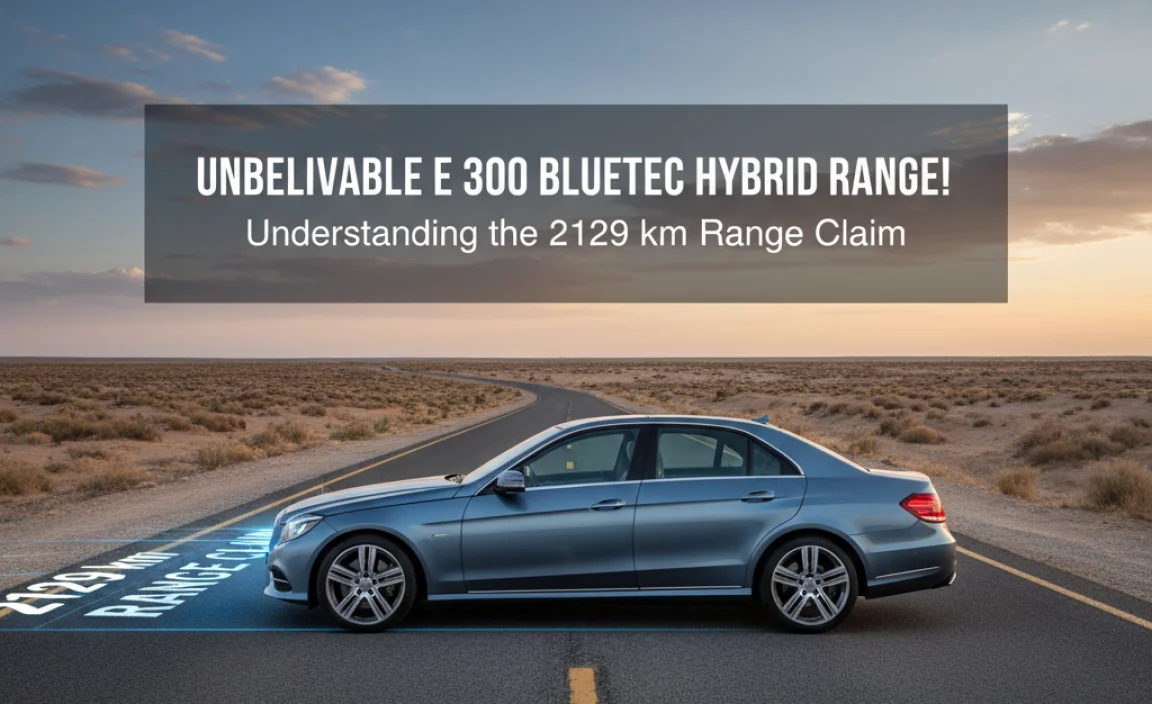
The figure of 2129 km (approximately 1323 miles) often cited for the E 300 BlueTec Hybrid’s range is a testament to its incredible fuel efficiency under optimal conditions. This figure is typically achieved through a combination of factors typical of long-distance driving:
- Steady Highway Speeds: The hybrid system excels when cruising at consistent, moderate speeds.
- Efficient Driving Techniques: Smooth acceleration, anticipation of traffic, and utilizing regenerative braking all contribute significantly.
- Tank Size: The E 300 BlueTec Hybrid has a generous fuel tank capacity, typically around 50-60 liters (13.2-15.8 gallons), which, when combined with its excellent MPG, allows for such extensive travel.
- Fuel Economy: Under ideal conditions, the E 300 BlueTec Hybrid can achieve remarkable fuel economy figures, often exceeding 70 mpg (UK gallons) or around 3.3 liters per 100 km on the combined cycle, and even better on highway runs. For example, achieving over 80 mpg on the highway is not unheard of.
It’s important to note that this 2129 km range is an estimate under ideal circumstances. Real-world range can vary based on driving style, terrain, climate, tire pressure, and vehicle load. However, it serves as a powerful indicator of the E 300 BlueTec Hybrid’s potential for ultra-long journeys.
Key Components Contributing to the Range
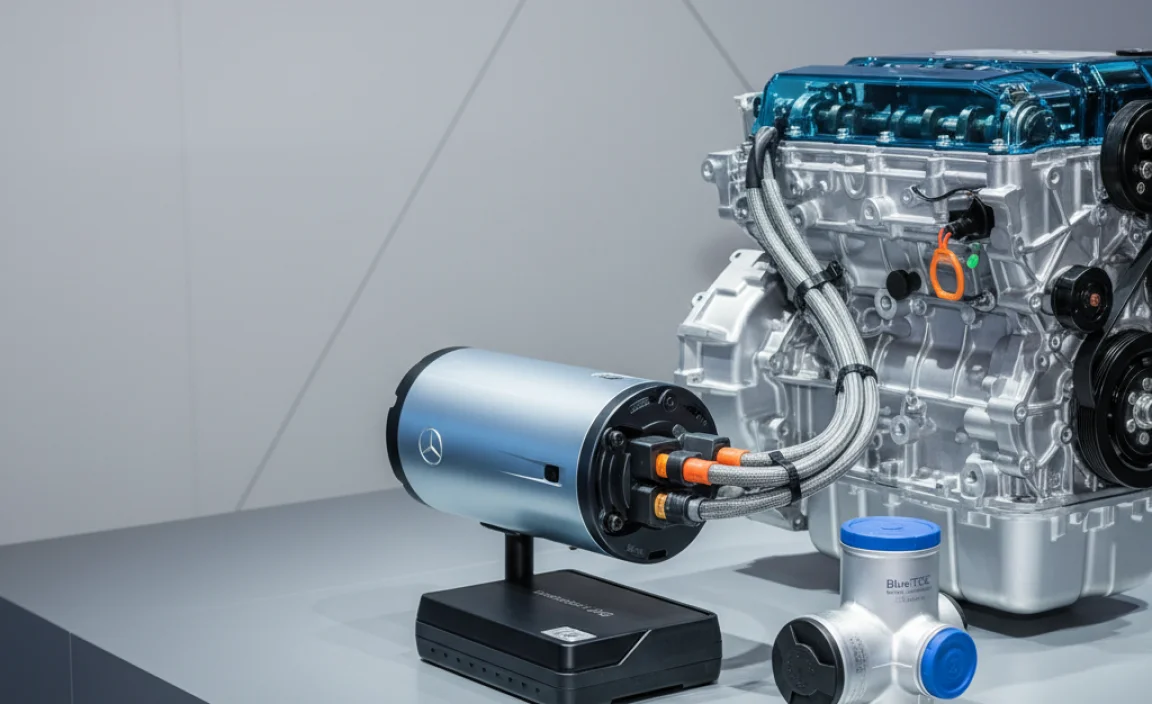
Let’s dive a little deeper into the specific technologies that make this impressive range a reality. These are the unsung heroes working behind the scenes to save fuel and extend your drive.
| Component | How It Contributes to Range |
|---|---|
| 2.0-Liter Turbocharged Diesel Engine (e.g., OM 654 family) | Highly efficient combustion and torque delivery, especially at cruising speeds, providing a strong baseline fuel economy. Modern diesel engines are engineered for maximum fuel utilization. |
| Integrated Electric Motor | Provides torque fill during acceleration, reducing the diesel engine’s load. Enables electric-only driving at low speeds, saving diesel fuel. |
| Lithium-ion Battery Pack | Stores energy captured during regenerative braking and from the diesel engine when it’s efficient to do so. Powers the electric motor for assistance, electric-only driving, and coasting. |
| 9G-TRONIC Automatic Transmission | Features more gear ratios than traditional automatics, allowing the engine to operate in its most efficient speed range more often. It also optimizes the integration of electric motor power. |
| Energy Management System (EMS) | The “brain” that intelligently decides when to use the diesel engine, electric motor, or both, based on driving conditions, battery charge, and driver input. It maximizes efficiency and recharges the battery. |
| Stop-Start Function | Automatically shuts off the diesel engine when the vehicle comes to a complete stop (e.g., at traffic lights) and restarts it instantly when needed, saving fuel during idle periods. |
Maximizing Your E 300 BlueTec Hybrid’s Range: Tips for Drivers
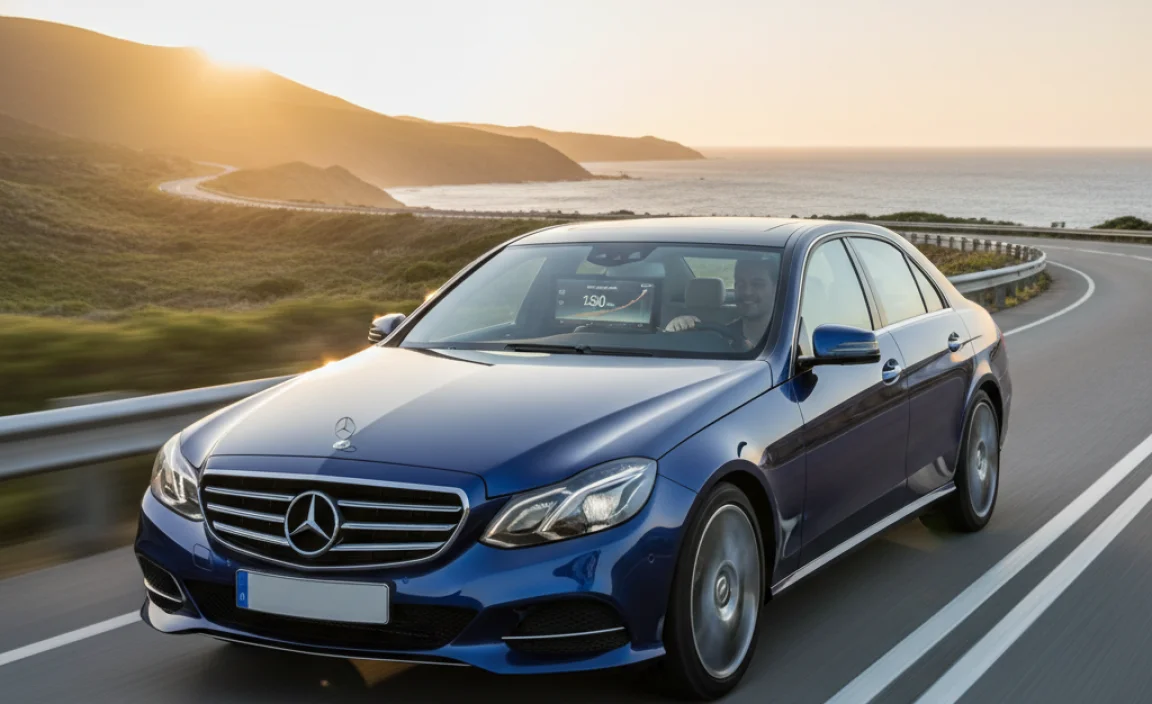
While the E 300 BlueTec Hybrid is a high-mileage champion by design, you can do even more to maximize its incredible range. These tips are simple and focus on how you drive and maintain your vehicle.
Driving Techniques for Maximum Efficiency
Your driving habits have a huge impact on fuel consumption. Here are some ways to be a more efficient driver:
- Smooth Acceleration: Avoid sudden, hard acceleration. Apply gentle pressure to the accelerator pedal to allow the hybrid system to work efficiently, often preferring electric assist or smooth engine engagement.
- Anticipate Traffic: Look ahead and anticipate stops. Instead of braking hard at the last moment, ease off the accelerator early. This allows the car to decelerate naturally, maximizing regenerative braking and saving your brake pads.
- Utilize Cruise Control: On highways, using cruise control helps maintain a steady speed, which is optimal for fuel efficiency. The hybrid system can often manage its power output more effectively when it doesn’t have to constantly adjust to varying inputs.
- Mind Your Speed: While modern cars are capable of high speeds, fuel economy significantly decreases above 60-70 mph (95-110 km/h). Driving at slightly lower, legal speeds on the highway can make a substantial difference in your overall range.
- Choose Your Driving Mode Wisely: Many hybrid vehicles offer different driving modes (e.g., Eco, Comfort, Sport). For maximum range, select the “Eco” mode if available. This mode typically adjusts throttle response, climate control, and transmission shift points to prioritize fuel efficiency.
Vehicle Maintenance for Optimal Range
A well-maintained car always performs better and is more fuel-efficient. Here are some key maintenance checks:
- Tire Pressure: Properly inflated tires reduce rolling resistance, meaning the engine (both diesel and electric) doesn’t have to work as hard to move the car. Check your tire pressure regularly, especially before long trips. The recommended pressures are usually found on a sticker in the driver’s side doorjamb or in the owner’s manual. According to the U.S. Department of Energy, maintaining correct tire pressure can improve fuel economy by up to 3%.
- Air Filter: A clogged air filter restricts airflow to the engine, making it less efficient. Regularly inspect and replace the air filter as per your Mercedes-Benz service schedule.
- Wheel Alignment: Misaligned wheels can cause tires to drag, increasing resistance and fuel consumption. If you notice uneven tire wear or the car pulling to one side, get your alignment checked.
- Regular Servicing: Follow your Mercedes-Benz recommended service schedule diligently. This ensures that all systems, including the engine, hybrid components, and transmission, are operating at peak efficiency.
Real-World Scenarios and Considerations
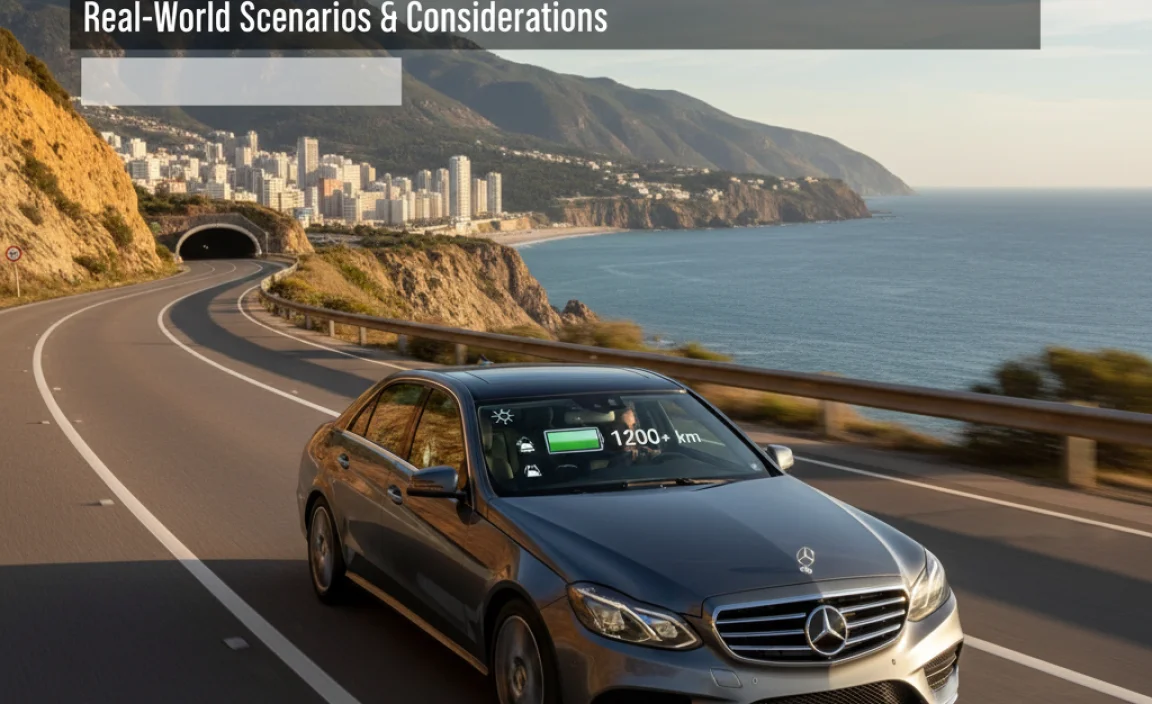
While the 2129 km figure is impressive, it’s crucial to understand the conditions under which it’s typically achieved and what factors might reduce it in your daily driving. Mercedes-Benz vehicles are renowned for their engineering precision, and the E 300 BlueTec Hybrid is a prime example of this. However, it’s not a magic bullet that ignores the laws of physics.
Factors Affecting Real-World Range
Several elements can influence how many kilometers you’ll actually drive between fill-ups:
- Driving Style: As mentioned, aggressive acceleration and hard braking will significantly reduce your range.
- Terrain: Driving in hilly or mountainous areas requires more energy than driving on flat terrain, thus lowering MPG.
- Climate Control: Using the air conditioning or heater extensively will draw power, impacting the electric motor’s contribution and potentially increasing the engine’s workload, especially in extreme temperatures.
- Traffic Conditions: Stop-and-go city driving is far less efficient than steady highway cruising. The hybrid system helps, but frequent idling and acceleration/deceleration cycles will drain the battery and use more fuel than ideal.
- Vehicle Load: Carrying heavy passengers or cargo increases the vehicle’s weight, requiring more energy to move.
- Tire Choice and Condition: Performance tires can sometimes offer less rolling resistance than very grippy sport tires, but proper tire maintenance (inflation) is paramount for all types.
- Short Trips: Frequent short trips where the engine and battery don’t have a chance to reach optimal operating temperatures can be less efficient, as the engine may run more often to warm up components and charge the battery.
Comparing Hybrid Range to Traditional Vehicles
The E 300 BlueTec Hybrid sets a high bar. To put its range into perspective, consider these points:
- Traditional Diesel Cars: Many non-hybrid diesel cars can achieve impressive highway ranges, often exceeding 800-1000 km (500-620 miles) on a tank, thanks to diesel’s inherent fuel efficiency. However, the hybrid system in the E 300 BlueTec Hybrid often surpasses these figures, especially in mixed driving conditions.
- Gasoline Cars: Conventional gasoline-powered cars typically have lower ranges, often between 400-600 km (250-370 miles) on a tank, depending on engine size and fuel economy.
- Full Electric Vehicles (EVs): While EVs offer zero tailpipe emissions, their range is typically between 300-500 km (185-310 miles), and charging times can be significantly longer than refueling a gasoline or diesel car. The E 300 BlueTec Hybrid offers a compelling middle ground for those who want excellent range without the need for frequent charging.
Frequently Asked Questions (FAQ)
Your E 300 BlueTec Hybrid Range Questions Answered
Here are some common questions beginners might have about the E 300 BlueTec Hybrid’s incredible range:
Q1: What exactly does “BlueTec Hybrid” mean for my E 300?
A1: “BlueTec” refers to Mercedes-Benz’s advanced diesel emission control system. “Hybrid” means it uses both a diesel engine and an electric motor. Together, they work to give you excellent fuel economy and power, making long drives more affordable and convenient.
Q2: Is the 2129 km range a real-world figure, or just a lab test?
A2: The 2129 km figure is typically achieved under specific, ideal conditions, often on very long highway drives with efficient driving. Your actual range will vary based on your driving habits, speed, terrain, and weather. However, even with variations, the E 300 BlueTec Hybrid offers exceptional range compared to many other vehicles.
Q3: How does the electric motor help my car go further on one tank?
A3: The electric motor assists the diesel engine, especially during acceleration and at lower speeds, meaning the diesel engine uses less fuel. It also allows for electric-only driving sometimes and captures energy when you brake (regenerative braking), using that energy later to help the car move, all of which saves diesel fuel.
Q4: Do I need to plug in the E 300 BlueTec Hybrid to charge the battery?
A4: No, this is a self-charging hybrid. The battery is recharged automatically through regenerative braking (capturing energy when you slow down) and by the diesel engine when it’s running efficiently. You don’t need to plug it in to enjoy the hybrid benefits.
Q5: What happens if the hybrid battery runs out of charge?
A5: The car will continue to run perfectly fine on its diesel engine. The hybrid system is designed to work seamlessly, so even if the electric assist isn’t available due to low battery charge, the diesel engine will handle all propulsion. The system will also automatically recharge the battery as you drive.
Q6: Will driving in the city affect my range more than on the highway?
A6: Yes, city driving with frequent stops and starts is generally less efficient for any car, including hybrids. However, the E 300 BlueTec Hybrid’s electric motor and regenerative braking help mitigate some of that inefficiency. For the absolute longest range, steady highway cruising is best.
Q7: How can I ensure my E 300 BlueTec Hybrid maintains its long-range capability?
A7: Regular maintenance is key! Keep your tires properly inflated, ensure the air filter is clean, and follow your Mercedes-Benz service schedule. Smooth driving habits – avoiding hard acceleration and braking – will also maximize your miles per tank.
Conclusion
The Mercedes-Benz E 300 BlueTec Hybrid stands out as a masterclass in automotive engineering, offering an exceptional real-world driving range that can significantly reduce the need for frequent refueling. Achieving up to 2129 km on a single tank isn’t magic; it’s the result of a sophisticated hybrid powertrain that intelligently blends efficient diesel power with electric assistance, complemented by aerodynamic design and a focus on fuel